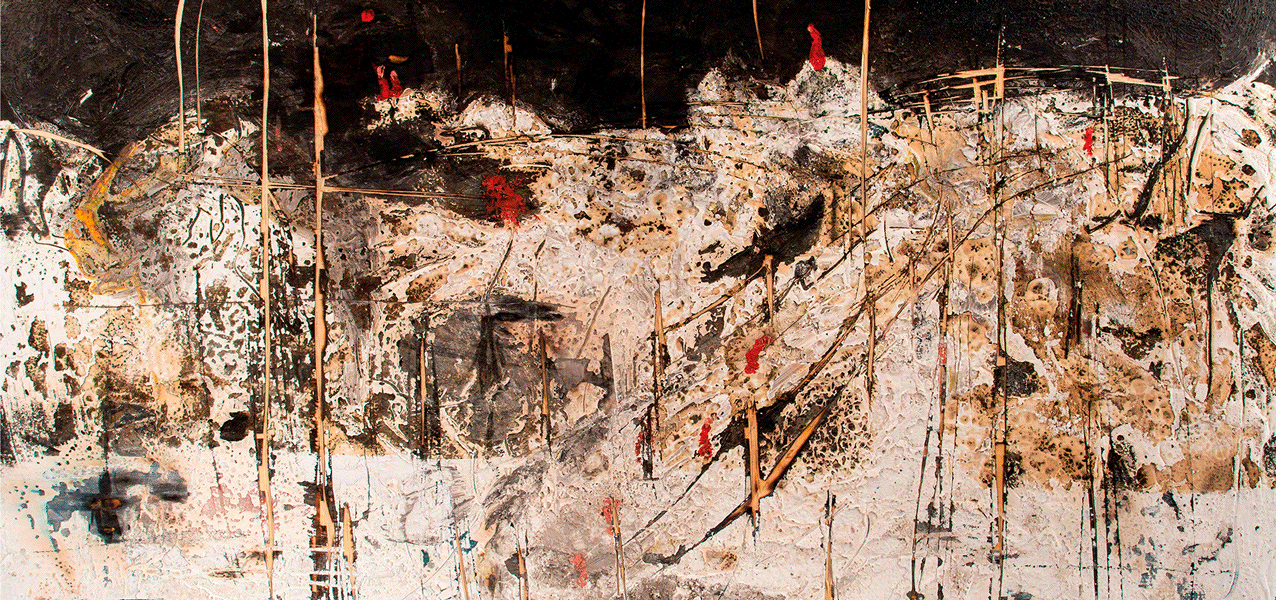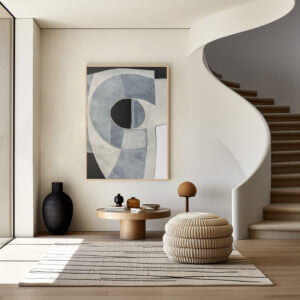Giuseppe Barilaro creates in order to destroy, he produces forms that he then tears apart, because what matters to him is to express the here and now of artistic action. And he says he is perfectly happy when one of his paintings is discussed at length.
Giuseppe, what has your path been so far?
I studied at the Academy of Fine Arts in Catanzaro and graduated in Decoration and Decoration for Sacred Arts. What followed came quite spontaneously; I started painting academically, but I soon lost interest and switched to studying psychology. Later I started to frequent the morgues in Catanzaro attending medical sessions, and there I fell in love with the human body and its pathologies.
At some point I tried to pour all this into art. I start with the classical techniques, i.e. oil painting, acrylic, tempera, and above all the orthodox composition, which includes colour and form, and I paint in a hyperreal way, after which I literally destroy the painting with combustion and tear apart all the forms I had previously created.
I want the painting to emerge on its own, in what remains after the combustion. I have given this practice the name of a pathology, prosopagnosia: the individual does not recognise the face of the subject and sees it differently, obscured, fragmented.
Why this choice?
In my personal philosophy, the face is the only virgin part of the human being. In a person, the face is what is readable by everyone and is always subject to judgement.
After destroying the face, I use a ‘red lava’, the colour is poured onto the support and with the flame it is literally burnt, then it is lacerated with the blade of a box cutter. Mine is an artistic action reminiscent of what happens in the operating theatre. I burn the colour, make it thicken and then cut it with the scalpel. This lacerated red skin is an explosion from which other colours emerge.
These lacerations also refer to the earth, to the furrows that are made for cultivation, so much so that I created a collection of 15 paintings that I called ‘Between the plough and the uncultivated land’.
What drives you to paint?
I want to leave tangible, sharp, bad traces. I am convinced that art has to change certain codes. My lacerations are traces of experience, which take into account what is happening in the world: what I see is an immense destruction, a bit Schopenhauer-like. I am fascinated by the idea that very little of the subject remains in my works. That there is a marriage between the subject itself and the destructive act, something that – in the niche of a painting – bears witness to the fact that ‘there’ something happened. Like the furrows I mentioned earlier, in which there is a marriage and the earth waits for water to germinate. Art for me has to abandon rhetoric, it has to say nothing, but find the right time in the right place.
Normally people talk about artists as creative people. Do you define yourself as more creative or destructive?
I have to say that I don’t really like the words ‘artist’ and ‘creativity’. I prefer to be in that place with that object, for something that is going to happen. I could call myself an alchemist, although it is a rather overused word. If I really have to define myself, I prefer to say that I am a painter. What gives me satisfaction is knowing that one of my paintings has found the right place, has found a home, perhaps in a context I had not foreseen. This fascinates me about art.
So how do you imagine a work of yours in a house or a hotel, for example?
That is exactly what I like, because I would like my paintings to be defended and discussed. I would like people to do more than just look at them. That is why I prefer them to be bought by people with little economic potential. If one of my paintings is bought by a collector it will end up with other paintings as a collector’s item. Instead, I am fascinated by the idea that one of my paintings is there in front of people’s eyes while they are at the table, and becomes an object of discussion. I would like it to bring emotions, feelings and therefore also a need to talk and share. In all this, the artist must remain behind the scenes, leaving the scene to the painting itself.
What do you think of Cinquerosso Arte?
It is a marvel! I am really in love with the people who are part of the project and their production. And then the atmosphere one breathes is one of great affection: when I was in Bologna, I was full of smiles.


